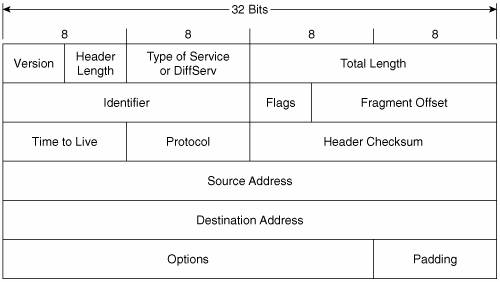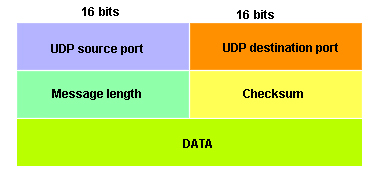Transmission Control Protocol (TCP)
TCP uses octets (8 bytes) as frames/packet.
TCP provides reliable, ordered, and error-checked delivery of packets between hosts.
TCP handles all handshaking and transmission details.
The Internet Protocol (IP)
Invented by Vint Cerf and Bob Kahn in 1974;
Internet Protocol is responsible for addressing hosts and routing datagrams (packets) from a source host to a destination host across one or more IP networks. Its routing function enables inter-networking,
IP delivers packets from the source host to the destination host based on the IP addresses in the packet headers.
IP encapsulates the data with source and destination addresses .
IPv4 is the dominant protocol of the Internet, now upgrading to IPv6
Datagram construction
Each datagram has two components: a header and a payload. The IP header is tagged with the source IP address, the destination IP address, and other meta-data needed to route and deliver the datagram. The payload is the data that is transported. This method of nesting the data payload in a packet with a header is called encapsulation.
IP addressing and routing
IP addresses associated to hosts in the network. IP routing is performed by all hosts and routers, whose main function is to transport packets across network boundaries. Routers communicate with one another via specially designed routing protocols.
User Datagram Protocol (UDP)
UDP is simpler, faster, and cheaper than TCP.
UDP is connectionless and hence unreliable as it does not establish a virtual circuit like TCP
UDP does not demand acknowledgment.
UDP sends out the message with a header of 8 bytes
Internet Control Message Protocol (ICMP)
ICMP messages are used for diagnostic or control purposes or generated responses to errors in IP operations. ICMP errors are directed to the source IP address of the originating packet.
tracert c, ping commands use ICMP.
 ශිල්ප 64
ශිල්ප 64